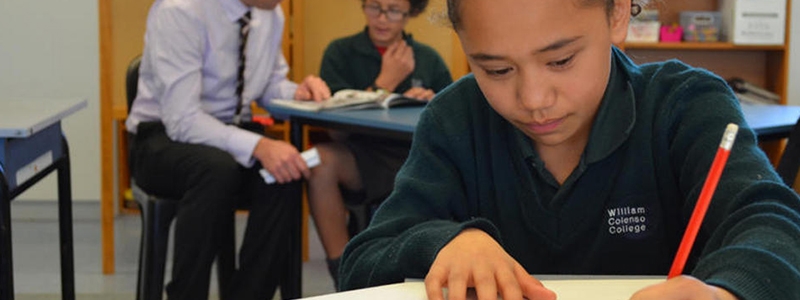Problem: The poor academic performance of Maori students in New Zealand, in conjunction with the social, economic and political differences between Maori descendants and those of Anglo-European background, inspired the founding of the Te Kotahitanga (which means the union of objectives) project, in 2001. In the past, more than 40% of Maori children dropped out of school, and their rate of suspension from school was three times higher than among other students. The Maori people also suffered from prejudice, sometimes even from the teachers themselves; their children left school sooner, with many of them never making it to high school. As a result, unemployment rates among Maori people were higher and they also earned lower salaries in the job market. The Te Kotahitanga project began with a study that was conducted to determine what caused the discrepancy between young Maori adults and those of other backgrounds. Afterward, changes ensued, including the adoption of an innovative curriculum and a teaching system that increased the academic involvement, performance and opportunities among young Maori adults. Russell Bishop, a professor of Maori studies at the University of Waikato, headed the study.

Solutions: The first phase of the project included a series of interviews among nine to ten year-old Maori students and their parents, teachers and school officials. The purpose was to identify what the Maori students and those that were directly responsible for their education were experiencing. With the study's results, the Te Kotahitanga project organizers developed a curriculum, known as the Effective Teaching Profile, or ETP, which took into account interviewee suggestions in addition to international study recommendations regarding the issue.
This profile became a foundation on which the teachers' work was based. The method embodies six key elements for teacher training: teachers should view the students as being culturally rooted; they should show interest in their students' academic performance; they should be capable of fostering a safe and well-managed learning environment, where authority is shared with the students; they should promote student participation; they should also implement strategies that foster interaction amongst students; and, finally, they should promote, monitor and continually evaluate their students' academic performance. The project also focuses on the students’ voices and their friendships, while promoting dialogue and the use of IT tools.
This new approach to teaching began to be implemented in the classroom in 2004 and 2005 through the Te Kotahitanga Professional Development Program, which included teacher training sessions and regular meetings. In addition, school principals, parents and the community began to concentrate on changing the structure of the schools and creating ways of supporting teachers. Michelle James, for example, a math teacher from Rotorua Girls High School, said that, during her training, she learned how important it was to establish trust with the students and have a closer relationship with them. Once she realized that this was the most important part of her job in the classroom, the learning process occurred much more naturally.
Outcomes: The project not only brought about reform throughout the school, it also proved itself to be efficient and a force of transformation for the students. Te Kotahitanga was implemented in 50 schools throughout the country. There was a significant increase in the academic performance of the students that were benefitted, especially in terms of overall literacy and mathematic ability. Positive gains were also observed in student participation, engagement and lesson assimilation. Teachers also noted that the support provided by schools was essential to improving the students' academic performance. The number of Maori students that finish high school also increased. The project lasted until 2013, the year in which it was one of the Wise Awards winners. Afterward, it was absorbed by new initiatives that were implemented by New Zealand's Department of Education to improve the academic performance of Maori students in the country's schools.






